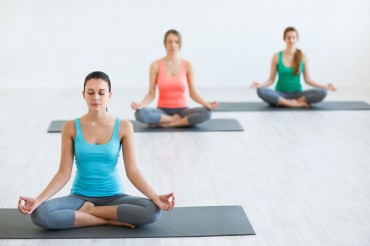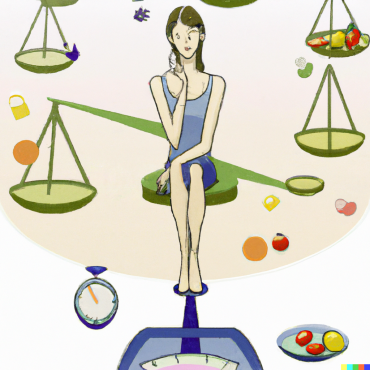The plethora of benefits yoga has to offer- including its therapeutic effects, stress busting, increased strength and flexibility, mindfulness and overall wellbeing – should be enough to get anyone rolling out the mat and trying this ancient technique. If you’ve never tried yoga, it can be quite intimidating, especially with the tongue twisting asana names, pretzel – like postures, deep philosophy and extensive breathing. As a yoga teacher and a preacher or yoga philosophy, I meet a lot of people with prevalent myths about this ancient practice which leaves them hesitant in taking a class. You do not have to be super bendy to work those postures out! It is crucial to establish a connection and stay aware of what the practice leaves you with. Yoga isn’t about mastering the seemingly impossible postures, but it’s about the journey you take even while trying out the simplest of postures. And I truly believe that the basic postures leave you with the maximum benefits.
Yoga is a set of theories and practices that has its roots in ancient India. “Yoga” means “union”. Yoga is a form of exercise based on the belief that the body and breath are intimately connected with the mind. By Controlling the Breath and holding the body in steady poses or “asanas”, yoga creates harmony between the body and mind. Yoga practice consists of five key elements: proper Breathing, proper Exercise, proper Relaxation, proper Diet, Positive thinking and Meditation. The exercise or asanas are designed to ease tensed muscles, to tone up the internal organs and to improve the flexibility of the body’s joints and ligaments. New to yoga? Our tips and guide here at yogalifemantra.com provide detailed instructions on getting started with yoga.
You might get overwhelmed with the variety of yoga practices and routines available out there but there is a yoga practice for all body types. Each type leaves you with a feeling of bliss and lightness. Take various sessions to find out what type of yoga works out the best for your body and mind and the one that connects the best with you. I suggest taking up the classical Asthanga yoga before trying out the fancier variants. Yoga can be practiced by anyone and you need no special equipments to start. A well ventilated room and square feet of space to move is all that you need. Before you dive headlong into the practices and philosophy, getting started with basic postures and setting up a home practice can be of great value. Here is a compilation of certain practices to give your new regime a kick start.
- Sukhasana or Happy pose
Sukhasana is practiced in a seating cross legged position with your spine erect, chin parallel to the ground, palms placed on your thighs and eyes closed. Sitting in this position requires you to watch your breath and clam your mind. This pose helps to de-stress and enhances the movement of the intestines carrying food. - Yogmudrasana
Yogmudrasana exerts pressure on the stomach and particularly on the pancreas. This posture can be done by sitting in sukhasana or padmasana and it gives a good massage to the abdominal organs.
Steps – Sit on the ground in cross legged fashion and hold your hands behind your back. Exhaling, bend your upper body to touch your forehead to the ground or as per convince. Hold position for 5 counts and inhaling, bring your body back to the initial position. - Mandukasana (Frog Pose)
Mandukasana also known as the frog pose is extremely beneficial to diabetic patients as it exerts pressure on the pancreas.
Steps– Sit on the floor in vajrasana. Make a fist of both the palms and place them touching the lower abdominal area on the thighs. Inhale deeply and while Exhaling, bend over the fists towards the ground. Hold till 5 counts or as per capacity and come back to the initial position. - Balasana (child pose)
Known quite aptly as the child’s pose, this is a great stress buster. It gently stretches the hips, thighs and ankles, calms the mind and helps relieve stress and fatigue.
Steps – Sit in vajrasana on the floor. Hinge forward touching your chest on your thighs and forehead on the ground. Curl your shoulders are rest your hands next to your heels with your palms facing upwards. - Pranayama
Pranayama techniques are simple breathing exercises that have a range of extensive benefits. Pranayama is the control of bioenergy in the body, which with regular practice cures your body of a range of diseases including diabetics. Various pranayama techniques like anulom vilome (alternate nostril breathing) and kapalbathi can help prevent and cure the body of diabetes and varied disorders.
Steps – Start by closing the right nostril and gently inhale through the left nostril. Then close the left nostril and exhale fully through the right nostril. While the left nostril is still closed, inhale fully through the right nostril. Finally exhale through the left nostril with the right one closed. Repeat this series 3 times. - Pavanmuktasana (Anti-flatulence pose)
Pavanmuktasana helps the stomach to compress and aids in relieving constipation, relieving flatulence, aids in digestion and helps compress the abdominal area.
Steps – Pavanmuktasana is practiced by lying on the ground on your back. Slowly lifting one leg 6 inches above the ground level, bend your leg and wrap your arms around, pulling it closer to your chest. Hold the position for 5 counts or till comfort level.

























































Comments